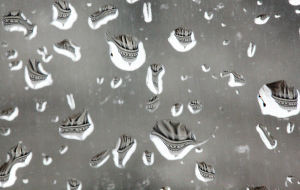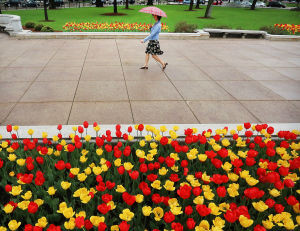As we head into the second half of April, recent weather has reminded us all of the old saying, “April showers bring May flowers.”
The question, of course, is why does April bring the showers?
First of all, is it actually true that April has an unusually large number of days on which it precipitates? Records for number of rainy days per month are hard to come by, but the showery reputation of April is likely the result of two, interrelated physical processes that characterize the arrival of spring.
First, as the hemisphere warms up at the end of winter and beginning of spring, the large pool of cold air that surrounds the pole in an irregular shape begins to shrink. A predominant way that this shrinking occurs is through the cutting off of local pools of cold air into isolated masses that become orphaned well south of the main reservoir. These features are known as “cut off lows.”
Simultaneously, the sun angle increases dramatically after the equinox (near March 21) and so the heating that can occur during the daytime increases as well. The combination of increased heating of the now snow-free surface and the presence of isolated cold air masses above the surface in the cut off lows, produces the perfect atmospheric conditions for isolated, convective rain showers on days that might begin with sunshine.
Throw in the regular passage of mid-latitude cyclones with their more organized precipitation shields and you have the chance to get a lot of rainy days in the transition month of April.
By May, the cyclone part of the rain threat is often reduced substantially as the jet stream migrates northward with the continued warming of the hemisphere.
— Steve Ackerman and Jonathan Martin, professors in the UW-Madison department of atmospheric and oceanic sciences, are guests on WHA radio (970 AM) at 11:45 a.m. the last Monday of each month.




